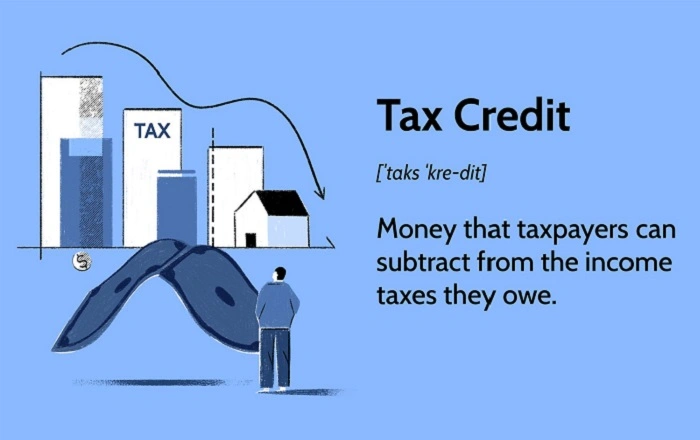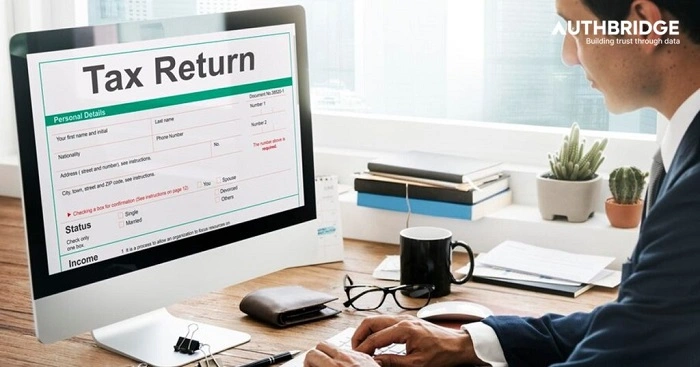Filing taxes — just saying the words can make anyone’s eyes glaze over. But when it comes to personal tax credit returns, it doesn’t have to be a nightmare. In fact, with a bit of patience and the right guidance, you can breeze through the process, avoid costly mistakes, and maybe even snag a bigger refund than you expected. Sound good? Great, because we’re diving deep into the nuts and bolts of how to fill out your personal tax credit return.
What Is a Personal Tax Credit Return Anyway?
Before we jump into the how-to, let’s hit the nail on the head: what exactly are we talking about? In simple terms, a personal tax credit return is a form or part of your tax filing that claims credits you’re eligible for — like a little helper that reduces how much tax you owe.
Think of it like this: You earned money, the government wants a slice, but thanks to credits for things like children, education, or medical expenses, you get to keep more of your hard-earned cash. If you’ve got tax credits, filing this return right means more money in your pocket or a less painful tax bill.
Why Should You Care About Filling It Out Correctly?
I know, I know — paperwork isn’t exactly anyone’s dream pastime. But messing this up? It could mean you miss out on hundreds, maybe thousands, of dollars. And worse, it might trigger an audit or delays.
Remember last year when I missed a tiny checkbox on my form and had to jump through hoops with the tax office? Yeah, don’t be like me. A little extra time now can save you headaches (and maybe some gray hairs) later.
Step-by-Step Guide: How to Fill Out Your Personal Tax Credit Return
Alright, time to roll up those sleeves. Here’s how to tackle that form with confidence:
Gather Your Documents
First things first, don’t even look at the form without your paperwork in hand. You’ll need:
- Your income slips (like T4 or W-2 forms)
- Receipts for deductible expenses (think: medical bills, donations, education fees)
- Social Insurance Number (or Social Security Number)
- Previous year’s tax return (if you have it)
- Any letters or notices from the tax agency
Having these handy is like having your toolbox ready before fixing a leaky faucet. You just don’t want to be scrambling halfway through.
Know Which Credits Apply to You
There are tons of tax credits out there, but not all apply to every single person. Here’s a quick lowdown on common ones:
- Basic Personal Amount: Everyone gets this. It’s like a free pass on a chunk of income.
- Spousal or Common-Law Partner Amount: If you support your partner financially.
- Childcare Expenses: If you’ve got little ones in daycare or with a babysitter.
- Medical Expenses: Keep those receipts; they add up!
- Tuition and Education Amount: For students, including part-time.
- Disability Amount: For those with disabilities or caregivers.
- Charitable Donations: Donated cash or goods? Claim ‘em here.
Tip: If you’re unsure, check your country’s tax agency website or chat with a tax pro. Better safe than sorry.
Start With Your Personal Info
The form usually kicks off with your personal details. Name, address, date of birth — nothing too wild here. But here’s a pro tip: double-check spellings and numbers. It’s crazy how a small typo can delay your refund by weeks.
Enter Your Income Info
This part is usually straightforward — pull numbers from your income slips and enter them exactly as shown. Don’t try to round or estimate; the tax folks want exact figures.
Claim Your Credits
Now, the fun part. This is where you actually reduce your taxable income.
- For the Basic Personal Amount, just tick the box or enter the amount as specified.
- For dependent credits, you’ll usually need to provide their details and confirm their eligibility.
- When it comes to expenses like medical or childcare, you’ll have to list amounts and attach receipts if requested.
Heads up: Some credits require supporting documentation attached or sent separately. Don’t skip this!
Use Worksheets (If Provided)
Some forms come with worksheets or guides for calculating exact credit amounts. These might look daunting but trust me, they’re worth it.
For example, figuring out your childcare deduction might require multiplying hours by a set rate or subtracting subsidies.
Taking these extra steps makes sure you don’t leave money on the table.
Double-Check Everything
I can’t stress this enough. Before submitting your return, review every number, every box, every signature.
Ask yourself:
- Did I include all credits I qualify for?
- Did I attach all necessary forms and receipts?
- Are all figures correct and legible?
Mistakes are like mosquitoes — annoying and easily avoidable with a little effort.
Submit Your Return
Whether you file online or send paper forms, make sure you submit before the deadline.
Online filing is usually faster and gives immediate confirmation. Plus, some tax software even checks for errors before submission.
If mailing, use tracked postage to have proof of delivery. You don’t want to be chasing a lost envelope for months!
Common Mistakes to Avoid When Filling Out Your Personal Tax Credit Return
Everyone slips up here and there — it’s human nature. But some mistakes can really trip you up.
Forgetting to Sign and Date Your Return
You’d be surprised how many people forget this simple step. No signature = no return processed.
Mixing Up Income and Credit Amounts
They’re different, folks! Credits reduce tax; income is what you earned.
Claiming Credits You Don’t Qualify For
Honesty is the best policy. Claiming ineligible credits can lead to audits or fines.
Ignoring Deadlines
Missing your filing deadline might mean penalties or losing out on refunds.
Tips and Tricks From Someone Who’s Been There
Alright, since I’ve stumbled through my fair share of tax returns, here are a few insider nuggets:
- Use tax software: These programs do most of the math for you and flag missing info.
- Keep a tax journal: Throughout the year, jot down deductible expenses so you’re not hunting for receipts at crunch time.
- Ask questions: Don’t be shy calling the tax agency helpline or visiting a tax clinic.
- File early: Beat the rush and get your refund sooner.
When Should You Consider Professional Help?
If your tax situation is straightforward — income from a regular job, standard credits — you might manage just fine solo.
But if you:
- Own a business
- Have rental or investment income
- Went through major life changes (marriage, divorce, kids)
- Face complex credits or deductions
It might be worth chatting with a tax professional. Sometimes, paying for advice upfront saves you a fortune (and stress) later.
Wrapping It Up: Personal Tax Credit Return Made Easy (Really!)
Filling out your personal tax credit return doesn’t have to be like navigating a maze blindfolded. Take it step by step, don’t rush, and keep your documents close. Yes, it can be a little tedious — but hey, the payoff is often well worth it.
So, next time you sit down with your coffee and your tax forms, remember: you’re not alone, and with a little patience, you can handle this. Who knows, you might even enjoy the satisfaction of a well-filed return. (Okay, maybe “enjoy” is a stretch — but you get the idea!)









